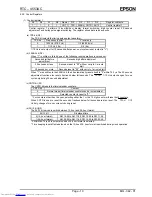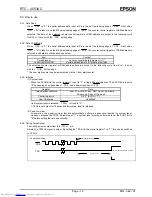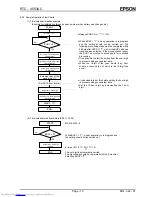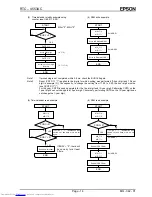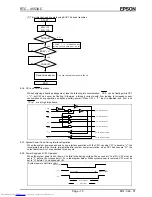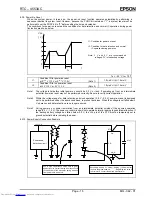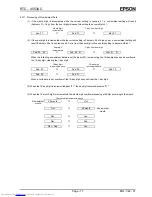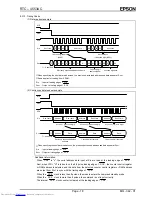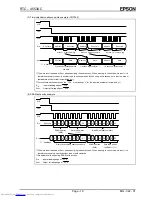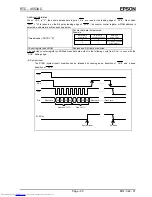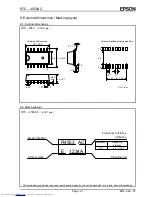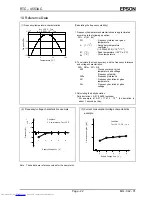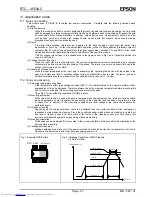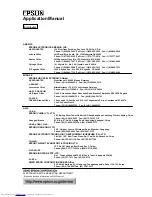
RTC – 4553AC
Page - 22
MQ - 342 - 01
10. Reference Data
[Calculating the frequency stability]
1. Frequency/temperature characteristics are approximated
according to the following equation.
∆
f
T
=
α
(
θ
T
-
θ
X
)
2
∆
f
T
: Frequency tolerance at given
temperature
α
(1 / °C
2
) :
Secondary
temperature
coefficient
((
−
0.035±0.005)
×
10
-6
/ °C
2
)
θ
T
(°C)
: Peak temperature (+25°C ± 5°C)
θ
X
(°C) :
Given
temperature
2. To calculate the clock accuracy, add the frequency tolerance
and voltage characteristics
∆
f/f
=
∆
f/fo +
∆
f
T
+
∆
f
V
∆
f/f
: Clock accuracy at given
temperature and voltage
(frequency stability)
∆
f/fo :
Frequency
tolerance
∆
f
T
: Frequency deviation at given
temperature
∆
f
V
: Frequency deviation at given
voltage
3. Calculating the daily deviation
Daily deviation =
∆
f/f ´ 86400 (seconds)
* For example, at
∆
f/f = 11.574 ´ 10
-6
, the deviation is
about 1 second per day.
(1) Frequency/temperature characteristics
-150
-100
-50
0
-50
0
50
100
Temperature [°C]
Frequenc
y
∆
f
T
×
10
-6
θ
T
= +25 °C Typ.
α
= -0.035
×
10
-6
Typ.
(2) Frequency/voltage characteristics example
- 4
2
F
re
que
nc
y
∆
f
v
×
10
-6
+ 4
±
0
3
4
5
Condition :
5 V as reference, Ta= +25
°
C
Supply Voltage V
DD
[ V ]
- 2
+ 2
6
(3) Current consumption/voltage characteristics
example
2
C
u
rr
e
nt c
ons
u
m
p
ti
on
[
µ
A ]
Supply Voltage V
DD
[ V ]
2
1
3 4 5
Condition :
Ta = +25
°
C , CS
1
= 0 V
6
Note These data are reference values for the sample lot.
electronic components distributor



